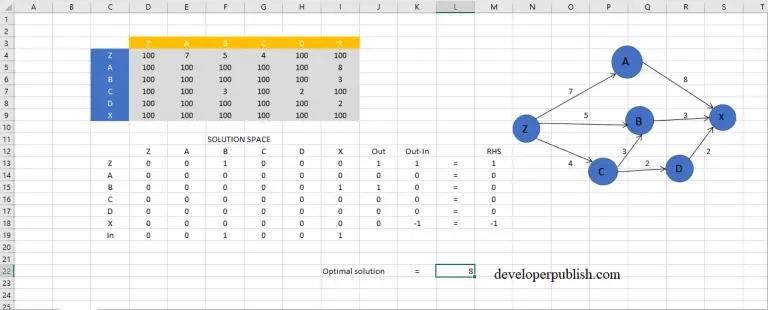

OpenSolver lets you solve linear and integer programming models. Learn about Linear and Integer Programming This “ Solving Transportation Problems with OpenSolver” page also includes a video. You may wish to view this YouTube OpenSolver introduction by Kevin Jia ( Engineering Science department, University of Auckland) Note that OpenSolver does some checks that your model is a linear one, but it is up to you to ensure this is the case by avoiding functions such as sqrt(), if(), abs(), max(), min(), etc. The result is then read in, and automatically loaded back into your spreadsheet. OpenSolver then analyses your spreadsheet to extract the optimization model, which is then written to a file and passed to the CBC optimization engine to solve. If you turn on “Show optimisation progress while solving” (which somewhat mimics the “Show Iteration Results” found in other solvers), OpenSolver will display the CBC output during the solution process (which is typically very fast).Ĭlick OpenSolver’s Solve button to solve the problem.


(You can also access this from the Model dialog.)
SIMPLEXLP SOLVER EXCEL SOFTWARE
To solve this linear model, choose a linear Solver such as CBC (which is the default solver), or Gurobi (if you have this commercial software installed), using OpenSovler’s Options button accessible from the OpenSolver Model menu. OpenSolver comes with a range of “solvers” designed for different types of optimisation problems these are listed on our guide to solvers. Integer and binary decision cells are indicated. OpenSolver allows you to eaily view your model’s adjustable cells, objective cell, and the constraints. The adjustable cells (decision variables) are shaded, with any integer variables being tagged with an ‘i’ and and binary variables with a ‘b’. The objective (goal) cell is highlighted and tagged as either min (minimise) or max (maximise). This produces a display such as that shown above where the left hand side and right hand side of each constraint are boxed and joined, and the constraint sense indicated (being either ‘’ for ‘>=’, or ‘=’, where each constraint is read left-to-right and/or down the page). Once you have built your model, you can check it using OpenSolver’s “Show/Hide Model” button. The OpenSolver Model dialog highlights your constraints on the sheet, making them easier to check. We hope you find it to be more intuitive, and that you enjoy the automatic highlighting of constraints directly on the sheet. If you prefer, you can use OpenSolver’s own model editor, accessed using OpenSolver’s Model button, to build your model. OpenSolver works with your existing Solver models, so you can still use Solver to build your models. You are now ready to build a model and solve it. After clicking on the security warning dialog, OpenSolver will appear in the Data tab. This will open Excel and load OpenSolver.

Instead, place it in your Documents or Program Files folder.) Then double click on the OpenSolver.xlam file. (Please do not place the OpenSolver folder on your desktop, as this seems to cause problems for some users in Windows 7.
SIMPLEXLP SOLVER EXCEL ZIP FILE
zip file to create your OpenSolver folder containing all the OpenSolver files.
SIMPLEXLP SOLVER EXCEL DOWNLOAD
You should start by downloading OpenSolver (see Download and Install), and extract the files from the.


 0 kommentar(er)
0 kommentar(er)
